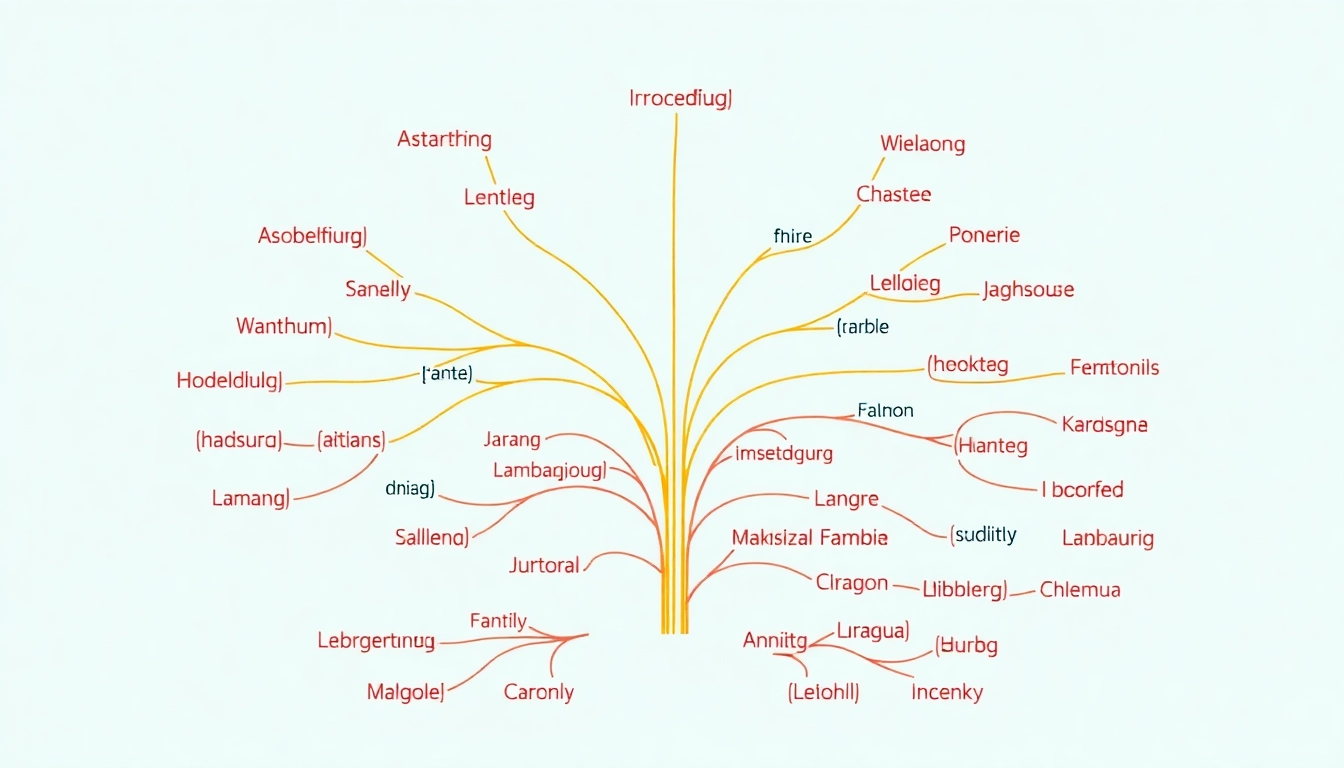What is Conjugation?
Definition and Importance of Conjugation
Conjugation is a linguistic term that refers to the modification of a verb from its basic form to express various grammatical categories. This essential process allows verbs to convey nuances of time, mood, and person, thereby enriching our communication. For instance, the verb “to be” changes forms to become “am,” “is,” or “are,” depending on the subject and tense. Understanding Conjugation is crucial for language learners, as it lays the foundation for mastering verb forms across different tenses and contexts.
Different Types of Conjugation
Conjugation can be categorized into various types based on several criteria:
- Regular vs. Irregular Conjugation: Regular verbs follow predictable patterns in their conjugated forms, while irregular verbs deviate from these patterns, often requiring memorization.
- Active vs. Passive Conjugation: Active voice indicates the subject is performing the action, while passive voice indicates the subject is receiving the action, requiring different conjugation structures.
- Finite vs. Non-finite Conjugation: Finite forms specify the subject and tense, whereas non-finite forms (like infinitives and gerunds) do not.
Examples from Various Languages
Conjugation practices vary widely among languages:
- Spanish: In Spanish, verbs are often categorized into three conjugation groups based on their infinitive endings: -ar, -er, and -ir. For example, the verb “hablar” (to speak) is conjugated as “hablo,” “hablas,” “habla,” and so forth.
- French: French verbs also exhibit regular and irregular forms, such as “finir” (to finish) becoming “finis” or “finissons” depending on the subject.
- German: German verbs demonstrate complex conjugation patterns. For instance, “sein” (to be) conjugates to “ich bin,” “du bist,” “er/sie/es ist,” reflecting distinctions in person and number.
How Conjugation Works
Understanding Tenses
Tenses indicate the time of the action or state described by a verb. In English, for example, we have:
- Present Tense: Indicates current actions (e.g., “I walk”).
- Past Tense: Describes actions completed in the past (e.g., “I walked”).
- Future Tense: Indicates actions that will take place (e.g., “I will walk”).
Understanding how these tenses alter verb forms is essential for effective communication in any language.
Person and Number in Conjugation
Conjugation also varies by person and number. For example:
- First Person Singular: “I run.”
- Second Person Singular: “You run.”
- Third Person Singular: “He/She runs.”
- First Person Plural: “We run.”
- Second Person Plural: “You (all) run.”
- Third Person Plural: “They run.”
Each language presents its unique approach to integrating person and number into verb conjugation, making it essential for learners to grasp these concepts thoroughly.
Mood and Voice in Conjugation
Mood expresses the speaker’s attitude toward the action of the verb, and voice indicates whether the subject performs or receives the action. Key moods include:
- Indicative Mood: Used for stating facts (e.g., “She reads.”).
- Subjunctive Mood: Often signifies wishes or hypothetical situations (e.g., “If she were to read…”).
- Imperative Mood: Used for commands (e.g., “Read!”).
Voice can be further categorized into active and passive forms. Understanding how to navigate these complexities is crucial for language proficiency.
Challenges in Learning Conjugation
Common Errors in Conjugation
Learners often face several challenges when mastering conjugation, which can lead to common errors:
- Mixing Up Irregular Forms: Irregular verbs can significantly differ in their conjugated forms, leading to inconsistent usage.
- Incorrect Tense Usage: Confusing past and present tenses can alter the intended meaning of a sentence.
- Subject-Verb Agreement: Failing to match verbs to their subjects in number and person can result in grammatical errors.
Overcoming Language-Specific Difficulties
Different languages impose unique challenges that learners must overcome:
- Complex Rules: Languages with extensive verb conjugation rules, such as Russian or Arabic, often intimidate learners.
- Phonetic Changes: Some languages incorporate phonetic changes during conjugation that may be unfamiliar, such as vowel harmony in Turkish.
Employing targeted practice and utilizing resources specific to each language can help mitigate these difficulties.
Tips for Effective Learning
To facilitate the learning process, consider the following strategies:
- Practice Consistently: Regular practice is key to mastering conjugation. Utilize flashcards, worksheets, or mobile apps dedicated to conjugation.
- Engage with Native Speakers: Conversing with native speakers can solidify your understanding and usage of conjugated forms in context.
- Use Contextual Learning: Instead of rote memorization, learn conjugation within the context of sentences to better understand their practical application.
Resources for Mastering Conjugation
Books and Online Tools
Countless resources are available for those who aim to master conjugation:
- Grammar Books: Comprehensive guides often include conjugation tables and explanations for various languages.
- Online Conjugators: Websites and apps dedicated to verb conjugation allow for quick and accurate look-ups of verbs in different tenses.
Practice Exercises and Quizzes
Engaging in practice exercises and quizzes can bolster your understanding:
- Online Quizzes: Numerous websites offer interactive quizzes that adapt difficulty levels based on user performance.
- Printable Worksheets: Worksheets reinforce learning through dedicated practice.
Language Learning Communities
Participating in communities can provide additional support:
- Online Forums: Engage with communities on platforms like Reddit or language learning websites, where members share tips and resources.
- Language Exchange Partnerships: Connect with language learners globally to practice conjugation and other aspects of language learning.
Future Trends in Language Education
The Role of Technology in Learning Conjugation
Technology continues to transform language education, making conjugation easier to learn through:
- Interactive Apps: Language learning apps are incorporating gamification techniques, making the learning process engaging.
- AI-Powered Tutors: AI can provide personalized learning experiences and feedback, adapting to individual learner’s needs.
Innovative Teaching Methods
Educators are employing innovative methodologies to teach conjugation:
- Blended Learning: This combines traditional classroom teaching with online activities, allowing students to learn at their own pace.
- Project-Based Learning: Learners engage in real-world projects that require practical use of conjugation, reinforcing their skills through application.
Promoting Multilingualism through Conjugation
As globalization increases, promoting multilingualism becomes essential:
- Cultural Exchange Programs: Facilitating exchanges allows learners to immerse themselves in new languages, enhancing their conjugation skills in real contexts.
- Community Language Classes: Offering classes in community centers can increase access to language education and encourage diverse language use.



